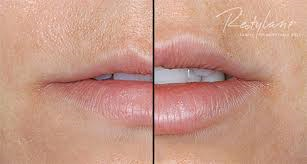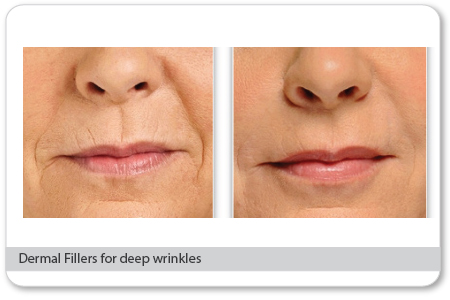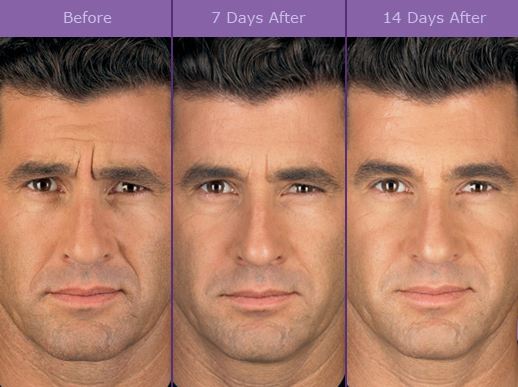Duck lips have replaced fake boobs as everyone’s favorite cosmetic-surgery joke (not to mention celebrity rumor), but that may end soon. Restylane Silk, a new, softer form of Restylane, the hyaluronic-acid wrinkle filler approved by the FDA in 2011 (and again in 2012, when lidocaine was added for pain), will be widely available throughout the U.S. next month.
Restylane Silk was approved by the FDA last June for injection in lips and perioral lines (smoker’s lines or pucker lines to you and me). This is the first product approved for these fine wrinkles. Because of changes in corporate ownership, the introduction of the filler was delayed, and only a small group of physicians in a pilot program had access to it. By February, that will all change.
The product’s softness is its defining feature. Fillers can be manufactured with different viscosities, and Restylane Silk is composed of smaller and smoother particles than its siblings, which allows practitioners to use of an ultrafine needle. The lip is perhaps the most sensitive area of the body, and the combination of the tiny needle and the inclusion of lidocaine in the formula provides a more comfortable patient experience. “It’s wonderful to have a product that is approved specifically for lips and the lines around them that gives a natural, supple look,” says Diane Berson, a Manhattan dermatologist, who has found that a little goes a long way. “In most patients, I only need one syringe.”
Because the lips are in constant motion, longevity has always been a problem for fillers in the area. Previous products often lasted only three to four months in lips versus six months in smile lines, says Berson. In the FDA trial of Restylane Silk, which involved 221 mostly female patients, 98 percent had visible improvement 14 days after injection, and 76 percent still had lip improvement at six months. Study participants were offered an optional second injection at two weeks, and some took advantage of it. Some patients may not even bother to test Restylane Silk’s longevity, says Jeanine Downie, a dermatologist in Montclair, New Jersey. “I think the majority of women getting this procedure will not wait the full six months, because they will enjoy the results so much, they will want to have it redone before their lips go back to baseline.”
If Restylane Silk lives up to its promise, comedians will need a different augmented body part to make fun of. Fortunately, the butt is coming on strong.
More
By Sandra Tyler
19 Apr, 2015
Botox, Breast Augmentation, Butt Augmentation, Comfort Anesthesia, Cosmetic Getaways, Ear Surgery, Esthetician, extractions, Face Lift, facial, facial rejuvenation, facials, Featured Procedures, Fillers, hair removal, Juevederm, Labiaplasty, Laser, liposuction, Male Surgery, Misc, News & Blogs, Rhinoplasty, skin care, spa, Special Offers, Tummy Tuck
breast augmentation, facelift, lifestyle lift, lifstyle, liposuction, mommy makeover, tummy tuck
The 2014 plastic-surgery statistics will be released later today by the American Society for Aesthetic Plastic Surgery (ASAPS). Thanks to an advance peek, I can report that butts are getting bigger, while breasts are getting smaller.
Buttock augmentations are up 86 percent over 2013. Michael C. Edwards, a plastic surgeon and the president of the ASAPS notes that most women don’t want giant backsides, they just want more shapely ones. The other big news is breast revisions, which are up 30.4 percent. Many attribute that rise to aging implants in need of replacement, along with many women’s desire to switch from saline to silicone-gel-filled implants, which may not have been available when they originally had surgery. What’s more, insiders say most of these women are exchanging their old implants for smaller replacements.
The other news in the numbers is a five percent drop in overall procedures: 10,663,607 in 2014, down from 11,419,610 in 2013. The decrease was mostly in minimally-invasive procedures like Botox and fillers. No explanation for this was offered by the ASAPS, but could it be what I call injection fatigue? Many women I’ve spoken to don’t want to return again and again for refills. Surgical procedures fell only 1.5 percent from 1,883,048 to 1,764,956, a drop that the number crunchers say is not statistically significant.
Fat—and getting rid of it—is still a high priority. In recent years the top surgical procedures for women have flipped back and forth between breast implants and liposuction. In 2014, liposuction held the number one spot, followed by breast augmentation (down 8.5 percent), tummy tuck, blepharoplasty (or eye lift), and in fifth place, the breast lift. Facelifts are in eighth place.
Liposuction may still be king (or is it queen?) in the surgical department, but non-surgical fat reduction with devices such as CoolSculpting and VASERshape rose a whopping 42.7 percent, from 94,922 in 2013 to 135,448 in 2014. That number could rise even more this year if ATX-101, an injection for fat reduction under the chin, gets FDA clearance, which it’s expected to receive.
More
By Sandra Tyler
27 Mar, 2015
Botox, Breast Augmentation, Butt Augmentation, Comfort Anesthesia, Face Lift, facial rejuvenation, Male Surgery, Rhinoplasty, Tummy Tuck
breast augmentation, face lift affordable surgery, liposuction, melbourne plastic surgery self-esteem
There are a lot of myths surrounding plastic surgery and various procedures. As myths tend to be, none of them are true. If you’re considering plastic surgery but you are holding back due to something that you’ve heard, take a look at this list of popular plastic surgery myths.
Plastic surgery doesn’t help with self-esteem: While changing the way that you look can’t change who you are on the inside, nearly 88% of plastic surgery patients felt better about themselves post-surgery — that’s a pretty decent amount!
Most procedures are not affordable, and only celebrities can afford plastic surgery. While this might have been true many years ago, it is no longer the case. Thanks to new technology and practices, plastic surgery procedures are far more affordable than they were before. Some doctors will also work with patients when it comes to things like payment plans, so that’s worth looking into as well. You’ll never know how much the procedure you want will cost until you book a consultation!
Breast implants are dangerous: For some reason, this rumor still flies, though it’s not the case at all. Breast implants are not linked to cancer in any way, and the materials used for implants are constantly monitored for possible problems. The FDA has signed off on breast implants because they are, in fact, safe.
It’s too much of a risk: Any kind of surgery comes with risks, but plastic surgery risks can be minimized if you find the right surgeon. Surgeons that have experience performing the procedure that you have in mind perform the same surgery every day, and that means that these surgeons are far less likely to make mistakes. Risks that come with surgery often have very little to do with the actual procedure, and any risks associated with the procedure will be clearly outline prior to the day of surgery.
Only women have plastic surgery. This can seem true, since most of the time we read about female celebrities getting plastic surgery. The truth is that men have many different procedures during regularly as well. Maybe men just don’t talk about it as much?
You can’t breastfeed if you have implants. Many women have no problem breastfeeding after breast augmentation. Once again, this is very much a myth, and if there are any issues that could arise, your doctor will discuss these with you before surgery.
Really Putting Rumors to Rest
It can be easy to believe rumors that are spread all too frequently, but rumors also tend to breed fear. Often, people that want to explore plastic surgery options will not book a consultation appointment for fear that some of the rumors heard are true. However, the best way to find out if there’s any truth to your fears is to visit with a surgeon, ask questions, get answers, and really find out the truth behind those concerns. You can also take a look around our blog for additional information about various plastic surgery procedures.
More
By Sandra Tyler
16 Mar, 2015
Botox, Breast Augmentation, Butt Augmentation, Comfort Anesthesia, Ear Surgery, Face Lift, liposuction, Rhinoplasty
Cosmetic Surgery, liposuction, plastic surgery, rhinoplasy
When it comes to social media, we’re huge advocates of using it to the best of your abilities. It opens up communication, allows us to share photos and ideas with our friends, and in general, gives everyone a voice. Today, however, we found out social media is doing another influential thing: contributing to the plastic surgery craze (it’s okay if you need to re-read that last sentence, we get it).
According to the American Academy of Facial Plastic and Reconstructive Surgery, reports on their annual findings on surgery found that the world of social media is strongly linked to the increase in plastic surgery, mainly because Facebook, Twitter, Instagram and the like are making those who frequently use the sites more critical of themselves. Below are some of the statistics from the study that have us a little concerned:
- Because of social media photo sharing, 31% of surgeons have seen an increase in requests for plastic surgery because patients have a more critical eye on themselves.
- 73% of procedures (up from 62% the previous year) were cosmetic versus reconstructive in nature.
- Studies show that people are more drawn towards images in specific proportions, like facial features, making them more aesthetically pleasing.
So what does this all mean? When people look at pictures of themselves on social media, they’re looking at much more than just themselves. They’re also comparing themselves to the people that they follow, whether they be friends, models, celebrities, etc. and users are being much more critical of themselves because of the comparisons they’re making. This, in turn, is contributing to a rise in plastic surgery requests. Call us crazy, but we’re pretty sure that one or two bad Instagram photos aren’t worth thousands of dollars in surgery to look like someone else.
More
As we pointed out earlier today, South Korea has been pumping out the crazy (amazing) beauty trends lately—but this is one that may be just plain insane. A clinic there, AONE, is now offering a surgery called the “smile lipt,” which lifts the patient’s lips into a permanent smile. “Mouth corners lift up very naturally after surgery, and although mouth corners stay upturned on an impassive face, they lift up even more distinctively during a smile,” said Kwon Taek Keun, a surgeon and the clinic’s founder. The procedure “corrects” any sagging or asymmetric mouth corners. Basically, it’s a cure for “bitch face.”
Maybe this sounds great to some people (the Joker? Miss America contestants?) but to me, it’s straight out of a dark, dystopian future where everyone is relentlessly chipper. I apparently suffer from bitch face myself—I’m frequently asked if I’m angry or upset when I’m nothing of the kind. And as much as I hate people asking why I’m annoyed when I’m merely sleepy or concentrating on what I want to eat for dinner, I think it would be much worse to look perpetually happy thanks to a creepy permanent smile plastered on my face. Having the same expression whether I’m at Disney or a wake? I’ll pass, thank you.
More
By Sandra Tyler
16 Mar, 2015
Botox, Fillers, Juevederm, Misc, News & Blogs
botox, collagen, Cosmetic Surgery, facial aging, fat transfer, fillers, hyaluronic acid, juevederm, non surgical, restelyn, wrinkles
Fillers are popular. To help you decide whether this treatment is right for you and to have the treatment performed safely, the AAD provides the following facts.
What happens when I get a filler?
The procedure varies with the filler your dermatologist will use, the part of the body to be treated, and your medical history. Here are some general guidelines about what you can expect:
- Most filler treatments take between 15 and 30 minutes and require one office visit.
- Before getting the injections, you may need ice, an anesthetic applied to the skin, or a nerve block (an injection). This varies with the filler and area to be treated. Hands generally do not need anesthesia; lips often require a nerve block.
- Your dermatologist will inject the filler into the area, often giving you several injections to produce the best results.
- You may feel a stinging or burning sensation as the filler is injected.
- A few fillers require allergy testing to make sure you do not have an allergic reaction.
- If you need allergy testing, you must wait for the results from the allergy test before you can get the filler.
- If your own fat will be used as a filler, the entire treatment can often be completed in one day. You will first have a procedure called tumescent liposuction, which safely removes a small amount of fat from another area of your body. The fat removed from your body is then processed so that it can be injected into the area that needs more fullness.
What must I do after getting a filler?
Most patients can return to their everyday activities after leaving the office.
To reduce any redness and swelling from the injections, your dermatologist may recommend icing the area for 15 to 20 minutes before you leave.
Before you leave the office, you should be able to apply makeup.
After leaving the office, you should:
- Wait until the next day to exercise or do any other strenuous activity.
- Stay out of the sun and do not use a tanning bed or other type of indoor tanning.
- Avoid touching the treated area for three days, unless you receive instructions to massage the area.
- One filler, poly-L-lactic acid, requires you to gently massage the treated area for about 5 minutes several times a day for 1 to 2 weeks. Your dermatologist will tell you if you need to massage the area.
Is there downtime?
This varies with the filler. Most fillers do not cause downtime. Be sure to ask your dermatologist whether you will have downtime.
When will I see results after getting a filler?
This also varies with the filler. Most fillers fill the skin, so they produce immediate — or close to immediate — results. A filler also can stimulate your body to produce collagen, but this takes time.
Most fillers offer immediate results
| Filler |
When see results |
| Collagen |
Immediate |
| Hyaluronic acid gel |
Immediate |
| Calcium hydroxyl apatite |
Immediate |
| Poly-L-lactic acid |
2 or 3 weeks |
| Fat taken from your body |
Immediate |
| PMMA (polymethylmethacrylate) |
Immediate |
You may see other fillers advertised. All fillers listed above have been approved by the U.S. Food and Drug Administration (FDA), except for self-donated fat. This filler does not require FDA approval because it comes from your own body.
Will I look natural?
To get natural-looking results, the person injecting the filler must have expertise in placing the filler.
Dermatologists recommend not overdoing fillers. Your results will look more natural with a conservative approach. For example, patients who have very thin lips should not get dramatically fuller lips. Creating fuller lips in these patients could be extremely unflattering because the lips might start to resemble a duck’s bill.
How long will the results from fillers last?
Most fillers offer temporary results and require repeat treatments to maintain the results.
Temporary fillers offer one key advantage. These can be injected as needed to replace lost fullness. This is advantageous because no matter what we do, our skin continues to age.
How long fillers typically last
| Filler |
How long it lasts |
| Collagen |
2 to 3 months (often longer when treating scar) |
| Hyaluronic acid gel |
4 to 12 months |
| Calcium hydroxylapatite |
6 months to 1 year |
| Poly-L-lactic acid |
1 to 3 years |
| Fat taken from your body |
1 to 3 years (often longer when treating a scar) |
| PMMA (polymethylmethacrylate) |
permanent |
You should ask your dermatologist how long the recommended filler should last in the area you want treated.
When is it safe to get another treatment?
If you get a temporary filler, you can usually have another treatment when the signs of aging reappear.
What are the possible side effects?
After receiving filler injections, some patients have minor, temporary side effects where they were injected. You may have:
- Redness
- Swelling
- Tenderness
- Bruising (occasionally)
These side effects tend to clear within 7 to 14 days — if not earlier.
Serious side effects are more likely when the person injecting the filler does not have adequate medical training and experience. To protect your health, you should never get filler injections in a non-medical setting, such as non-medical spa, salon, or someone’s home.
When fillers are injected in a non-medical setting or by an inexperienced provider, reports of more serious side effects increase dramatically. These side effects include:
- Lumps.
- Ridges.
- Over-filled areas.
- Allergic reaction.
- Skin discoloration.
- Infection.
- Severe swelling.
What is the safety record for fillers?
This is one of the safest cosmetic treatments available. For years, dermatologists have been refining the use of fillers to diminish signs of aging. Today, dermatologists safely treat people of many ages and all skin colors.
More
By Sandra Tyler
13 Mar, 2015
Botox, Misc, News & Blogs
botox, brotox, enhancement procedure, face lift, facelift, freeze face, lifestyle lift, wrinkles
Ladies, you may be surprised to know what men talk about on “guy’s night out,” besides women and sports — “Brotox,” also commonly known to the rest of us as Botox (botulinumtoxin A). The long-time cosmetic enhancement procedure, often linked to women, has now reached a wide group of men who desire to appear more youthful. The number of men undergoing Brotox has gone up 10 percent from last year, but why? Amid fear of competition with younger folk in the workplace and in their personal lives.
“Any man’s afraid he’s gonna get bumped by somebody younger in business or personal life too. I think once he gets over the stigma of it being something feminine, I could see more men being drawn to it,” said an unidentified man.
A multitude of men are currently making more appointments to “freeze” time and hold onto their eternal youth through this age defying treatment, but does the “freezing” effect work? Botox injections contain the bacterium Clostridium botulinum that can block signals from the nerves to the muscles so the muscle can no longer contract, preventing the onset of wrinkles when injected. The treatment is used on forehead lines, crow’s feet, or lines around the eye, and frown lines. However, men and women, should note wrinkles caused by sun damage and gravity do not respond to Botox injections.
The Botox procedure takes only a few minutes, with no anesthesia required. Patients will start to see results anywhere from three to seven days when the procedure begins to take effect. It is advised to avoid alcohol at least one week before treatment, and to stop aspirin and anti-inflammatory medications two weeks before treatment in order to reduce bruising associated with Botox.
Men have begun to adopt a more open attitude toward cosmetic procedures and have become more aware of the treatments available to them, as the age range of men being treated has widened. The BRO culture has fostered recent trends like the Hipster beard transplant, and now Brotox. The desire to climb the career ladder and keep up with the “younger-looking” has become the crucial reason why men opt for Botox — it’s surgery-free. Now, both men and women, vie to be the youngest and most desired of them all.
More







